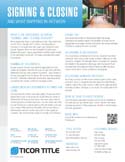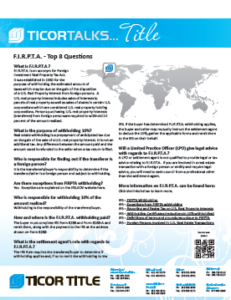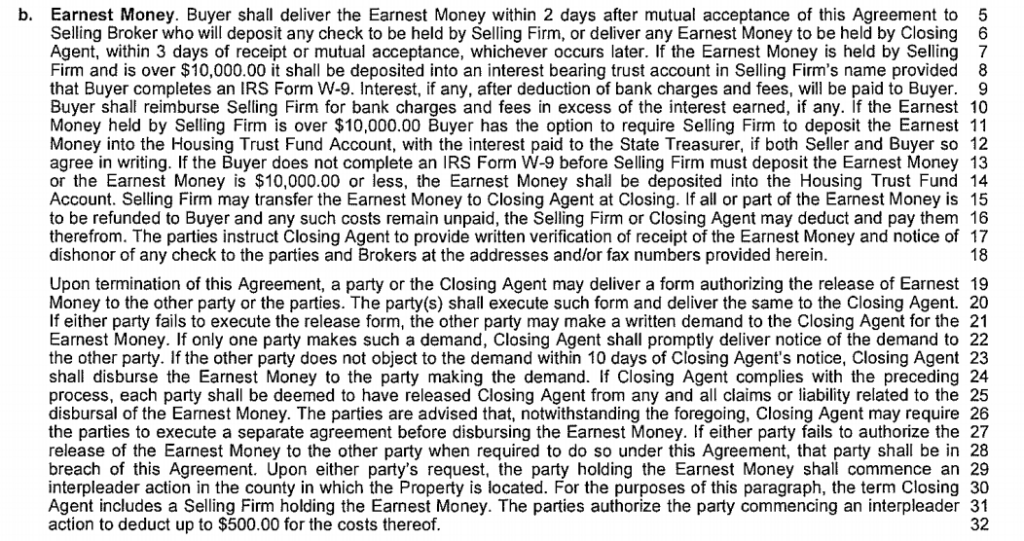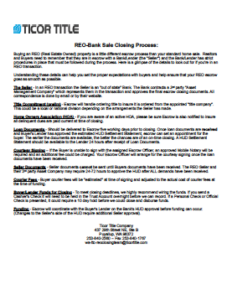
A cash back mortgage fraud scheme puts the loan at a greater risk because it originates with negative equity in the property.
In March 2011, seven people were arrested and indicted in a mortgage fraud scheme. For approximately two years the defendants had perpetuated their scheme in more than 18 transactions. The indictment says they “knowingly and willfully devised, and intended to devise, a scheme and artifice to defraud lenders … to obtain money from lenders by means of material facts and fraudulent pretenses, representations, and promises, and by intentional concealment and omission of material facts.”
Here’s an example of how the scam worked.
The loan officer lured in a straw buyer by telling him he would be paid $10,000 for every house he purchased without having to put any money down, along with additional money when the homes were resold. Sounds great, right? The ring leader would remodel the house and rent it out. After two years, the house would be resold to the renter. The rent payments were applied toward the mortgage payments.
The straw buyer agreed to lend his name and credit to a transaction. The parties closed on the purchase of one property on a Wednesday for $550,000. The straw buyer obtained a mortgage for $495,000. The loan application contained the following material false statements:
- Inflated monthly income
- Inflated bank account balances
- Inflated assets
The lender wired $502,041.34 to the escrow/title company. The escrow/ title company issued a check in the amount of $144,861.78 to a shell company the ring leader owned. This disbursement was not disclosed to the lender on the HUD-1. The straw buyer was given $9,700 cash in a paper bag by the loan officer after closing.
On Thursday the ring leader withdrew $66,500 from her bank account and converted it to a cashier’s check. The cashier’s check was provided to the escrow/title company as the down payment and closing costs purporting to be from the straw buyer and not third party funds.
Did you notice the timeline? The file closed before all the funds were in. This is what facilitated the scheme. The $144,861.78 is released to the ring leader who deposits the funds into her account so she can turn around and provide the down payment check on behalf of the buyer. No one is out any cash up front.
The perpetrators were indicted on 14 different charges. Their scheme qualified them for almost $13.5 million in fraudulent loans and received over $2,907,452 in ill-gotten gain from the proceeds of these loans and real estate transactions.
Here are some of the other details from the indictment:

A “cash back” scheme is one variation of mortgage fraud. In a “cash back” scheme, the perpetrator of the scheme offers to purchase a property for more than the
seller’s asking price and submits a contract to the seller for the inflated price. The seller agrees to the sale because they are generally receiving the full asking price.
Often a “straw buyer” is used to facilitate the “cash back” scheme. Generally, a straw buyer is someone recruited by the perpetrator to take out a mortgage and purchase a house in their name. The straw buyer normally does not live in the house or have the intent to reside at the house.
A Uniform Loan Application, also known as Form 1003, is prepared for the straw buyer. A lender uses this form to record relevant financial information about the applicant who applies for a mortgage. Misrepresentations are made to qualify the straw buyer for a mortgage. In signing the loan application, the straw buyer acknowledges that “the information provided in the application is true and correct.”
This scheme could have never been pulled off without the escrow/title company. The indictment goes on to identify the role of an escrow/ title company in a real estate transaction:
Generally, a straw buyer is someone recruited by the perpetrator to take out a mortgage and purchase a house in their name.
A title or escrow company is used in which the subject property is deposited for safekeeping under the trust of a neutral third party (escrow agent) pending satisfaction of a contractual contingency or condition. Once the conditions are met, the escrow agent will deliver the property to the party by the contract.
After receiving the loan documents facilitating the buyer and seller signing, escrow agents prepare a final HUD-1 wherein details of the actual receipt of lender funds and fund disbursements are listed for the records of the lender, seller and purchaser. The escrow agent is required to disburse funds according to what has been indicated in the HUD-1 settlement statement.
The escrow agent received the down payment from the ring leader in transaction after transaction and never disclosed them as third party funds. The disbursements were also hidden since the ring leader was paid out of the escrow file without being disclosed to the lender on the HUD-1. The escrow/title company who handled these closings is now closed.
A cash back scheme puts the loan at a greater risk as the loan originates with negative equity in the property.
All of this information was crucial to the lender because a “cash back scheme puts the loan at a greater risk as the loan originates with negative equity in the property.” To summarize, “the co-conspirators artificially inflated the sales contract prices … the defendants concealed from the lending institutions by intentionally withholding from the lender that payments were made to unrelated third parties to the transactions or omitting on the HUD-1 that at the close of each sale a portion of the loan was paid to an unrelated third party to the transaction. Additionally, in some transactions, the parties failed to disclose to the lender that the straw buyer or purchaser of the property received cash back from other members of this conspiracy for the use of straw buyer’s credit to purchase the property.”
Moral Of The Story
All receipts and disbursements must be completely and accurately disclosed on the HUD-1 and to the lender. Making disbursements to individuals or entities who are not a party to the transaction is completely unacceptable. Seller proceeds should be disbursed to the seller only and not their LLC or members of their LLC.
 Download a printable article here: What Happens Between Signing and Closing of Escrow
Download a printable article here: What Happens Between Signing and Closing of Escrow





 Calculate rates for your GFE instantly! Try out the free title and escrow rate calculator today!
Calculate rates for your GFE instantly! Try out the free title and escrow rate calculator today! 





